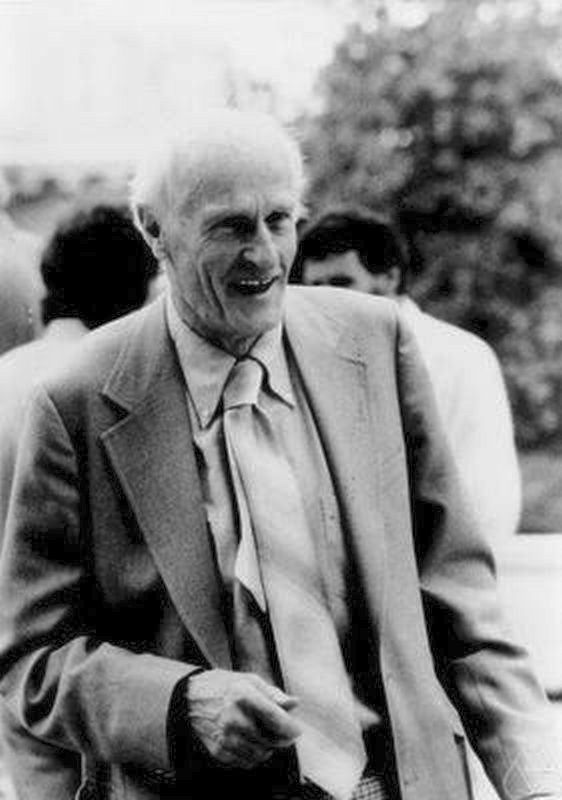For example, the philosophers who were interested in logic were probably rather logical for mathematicians. But the ASL got us together, so we could talk to each other and publish in the same journal.

About Stephen Cole Kleene
Stephen Cole Kleene was an American mathematician. One of the students of Alonzo Church, Kleene, along with Rozsa Peter, Alan Turing, Emil Post, and others, is best known as a founder of the branch of mathematical logic known as recursion theory, which subsequently helped to provide the foundations of theoretical computer science.
More quotes from Stephen Cole Kleene
As I say, there was this movement to try to bring philosophers and mathematicians together into an organization where they would talk to each other. An organization wasn’t effective unless you had a journal. That’s about all I know.
American mathematician and theoretical computer scientist
And what I learned in Church’s course. He trained us intensively in his new system, which he was just developing. Two papers were presented. I think the second paper wasn’t published until well after the course was finished.
American mathematician and theoretical computer scientist
It wasn’t until my second year that I got to actually work with Church.
American mathematician and theoretical computer scientist
When I got to Princeton I made a point of attending the Philosophy Club and listening to the lectures, but I didn’t get involved in any discussions in those clubs. I guess after the first year, I dropped that.
American mathematician and theoretical computer scientist
The job in Wisconsin was the first genuine offer of an academic job in a university which I received.
American mathematician and theoretical computer scientist
I had some hesitations about philosophy because, if you worked out a philosophical theory, it was hard to know whether you were going to be able to prove it or whether other theories had just as good a claim on belief.
American mathematician and theoretical computer scientist
Well, I think Barkley and I were the only two who were working with Church for a Ph.D.
American mathematician and theoretical computer scientist
For example, the philosophers who were interested in logic were probably rather logical for mathematicians. But the ASL got us together, so we could talk to each other and publish in the same journal.
American mathematician and theoretical computer scientist
Here at Wisconsin we didn’t get an undergraduate course in mathematical logic until the ’60s.
American mathematician and theoretical computer scientist
Those three years ended with June 1933. At that time I left Princeton, having submitted my Ph.D. thesis.
American mathematician and theoretical computer scientist
I’m sure Church got some of his ideas from this trip to Europe.
American mathematician and theoretical computer scientist
I had a liberal arts education at Amherst College where I had two majors, mathematics and philosophy.
American mathematician and theoretical computer scientist
I went to Princeton in the fall of 1930 as a half-time instructor.
American mathematician and theoretical computer scientist
I read one or two other books which gave me a background in mathematics other than logic.
American mathematician and theoretical computer scientist
I don’t think Post often came to Princeton during the ’30s. I can’t remember ever seeing him in Princeton.
American mathematician and theoretical computer scientist
I went to Princeton from Amherst, where I split my interests between mathematics and philosophy.
American mathematician and theoretical computer scientist
In the fall term of 1933-34 I was on my family farm in Maine.
American mathematician and theoretical computer scientist
I think Veblen had an interest in logic.
American mathematician and theoretical computer scientist
I think that after Church got his Ph.D. he studied in Europe, maybe in the Netherlands, for a year or two.
American mathematician and theoretical computer scientist